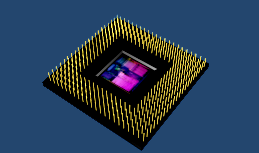Very Large Scale Devices
Very large-scale devices are integrated circuits that contain a large number of gates. A gate is a basic building block of digital circuits that performs a logical operation on one or more binary inputs and produces a single binary output. Gates are combined to create more complex circuits, such as adders, multiplexers, and flip-flops.
Very large-scale devices contain over 1000 gate equivalents per chip and represent the state of the art in chip manufacturing today. Advanced microprocessors and one-megabyte memory chips are examples of very large-scale devices. The central processing units of modern personal computers are also very large-scale devices.
Very large-scale devices are used in a wide range of applications, including personal computers, workstations, and mainframe computers. They are also used in embedded systems, such as those found in automobiles, appliances, and industrial equipment.
Very large-scale devices are manufactured using a process called photolithography. This process involves using light to transfer a pattern from a mask to a light-sensitive material on a silicon wafer. The pattern is then etched into the material to create the desired circuitry.
Very large-scale devices are typically made using a process called complementary metal-oxide-semiconductor (CMOS) technology. This technology uses both
